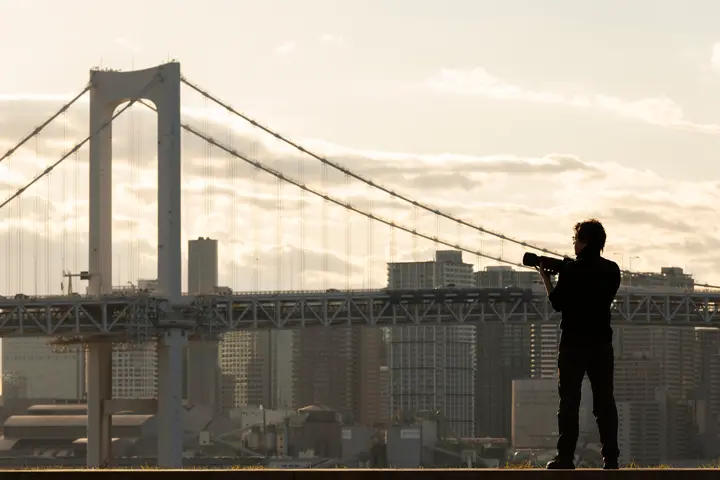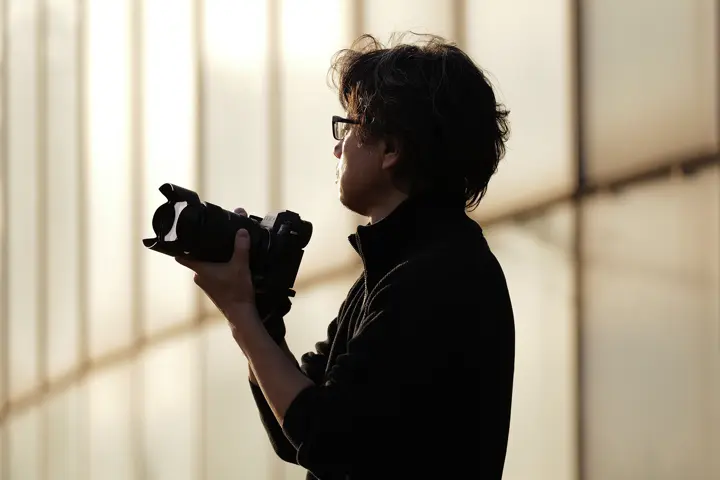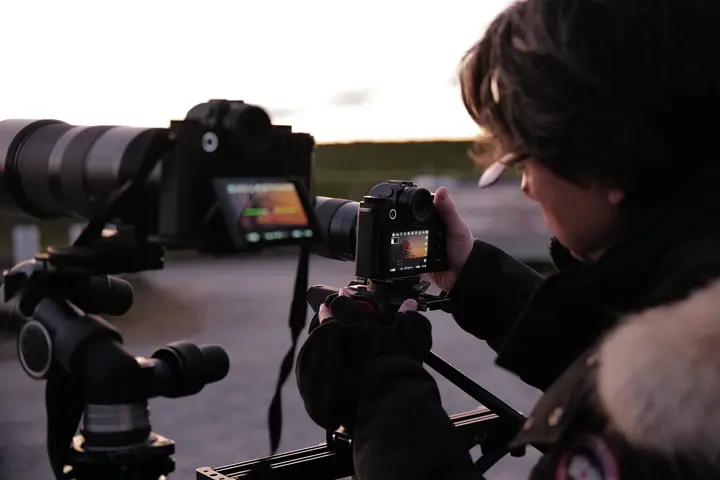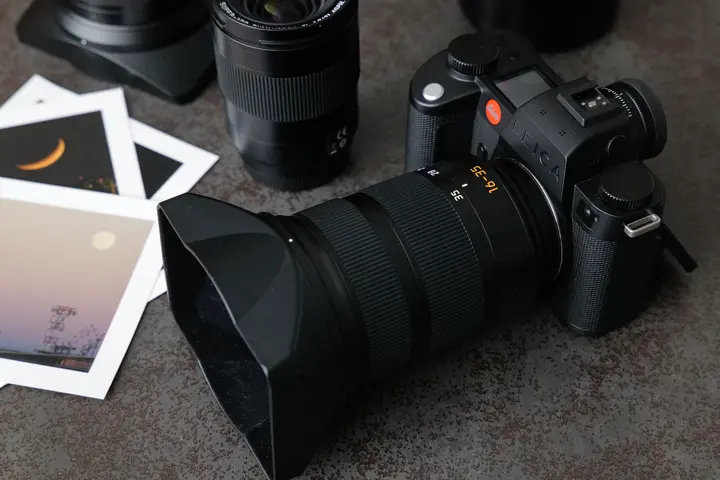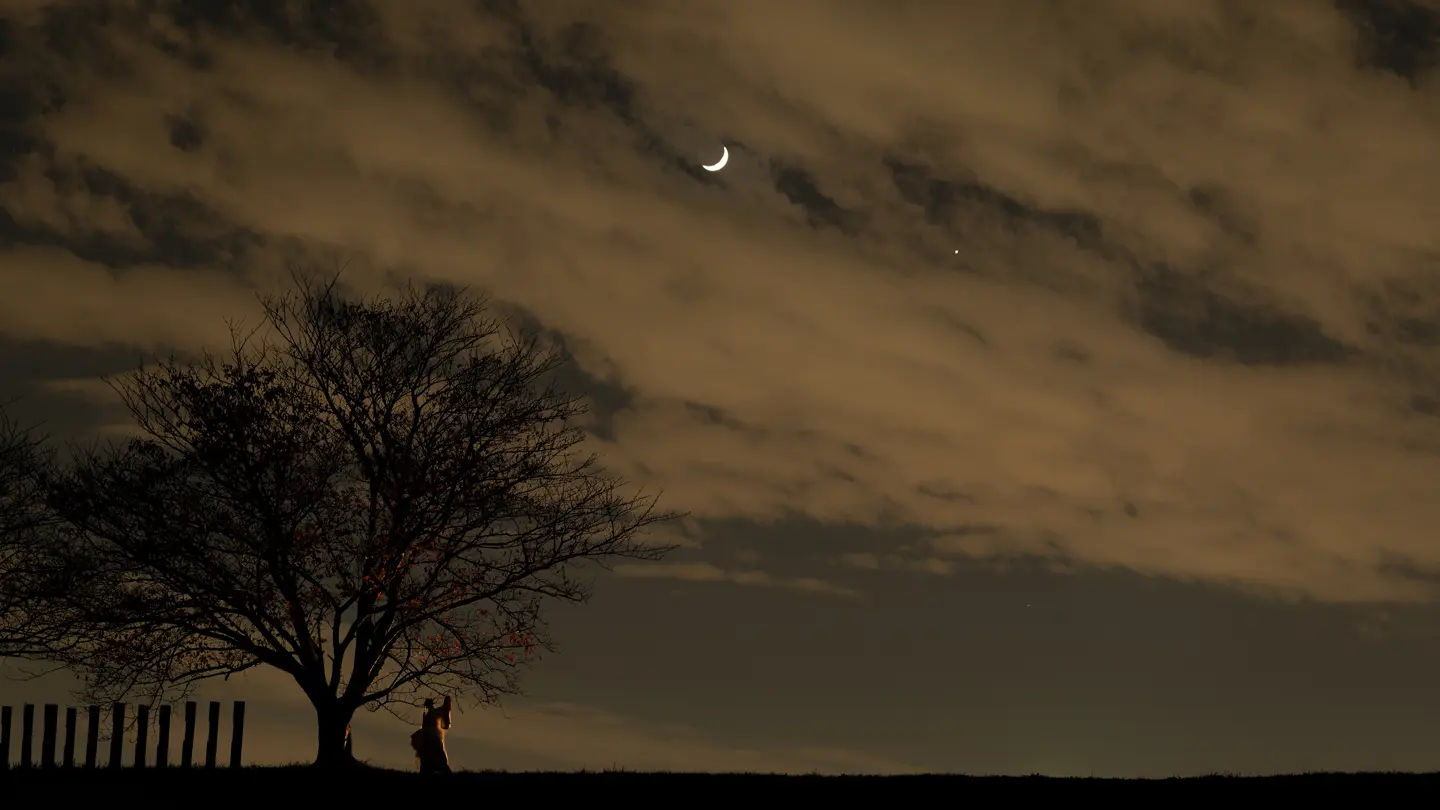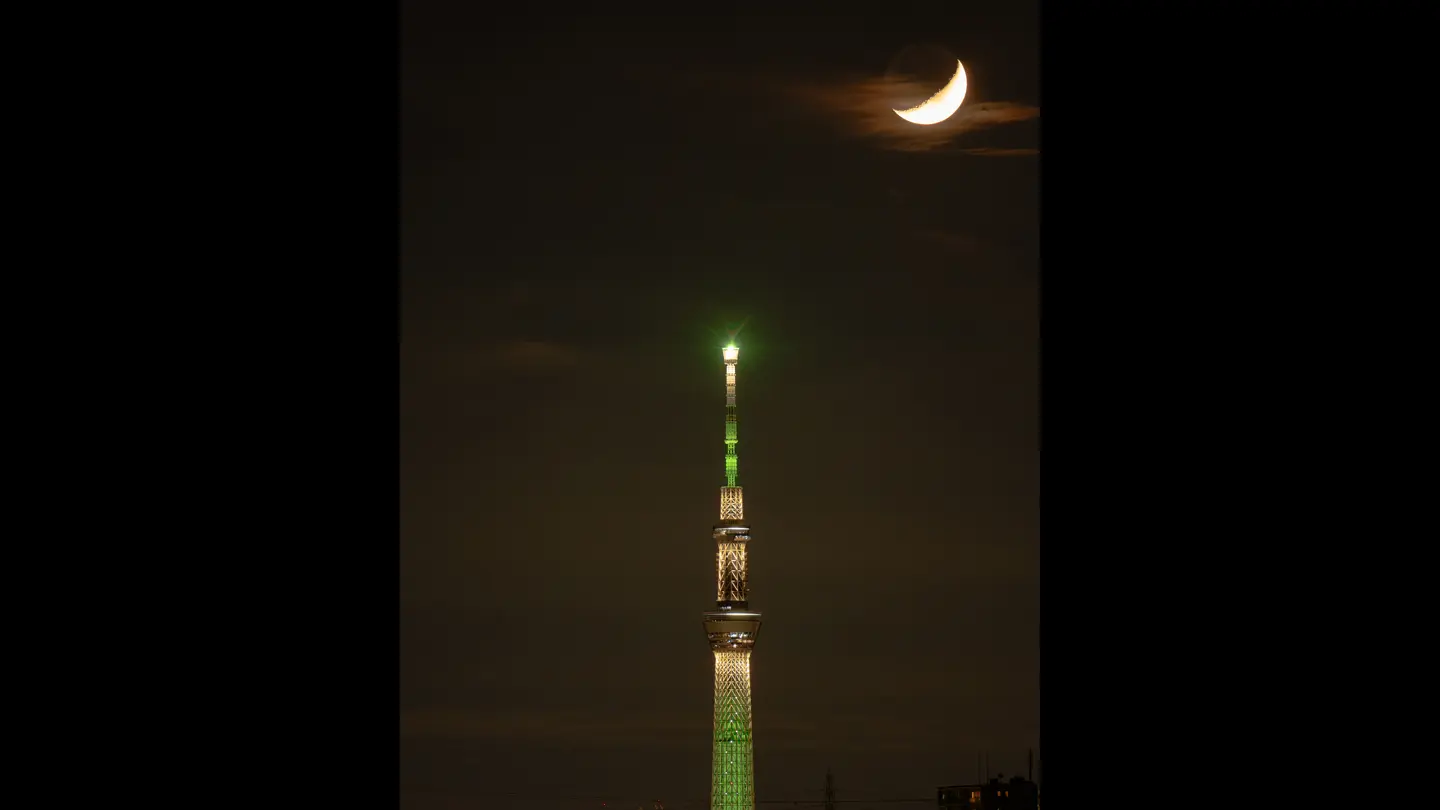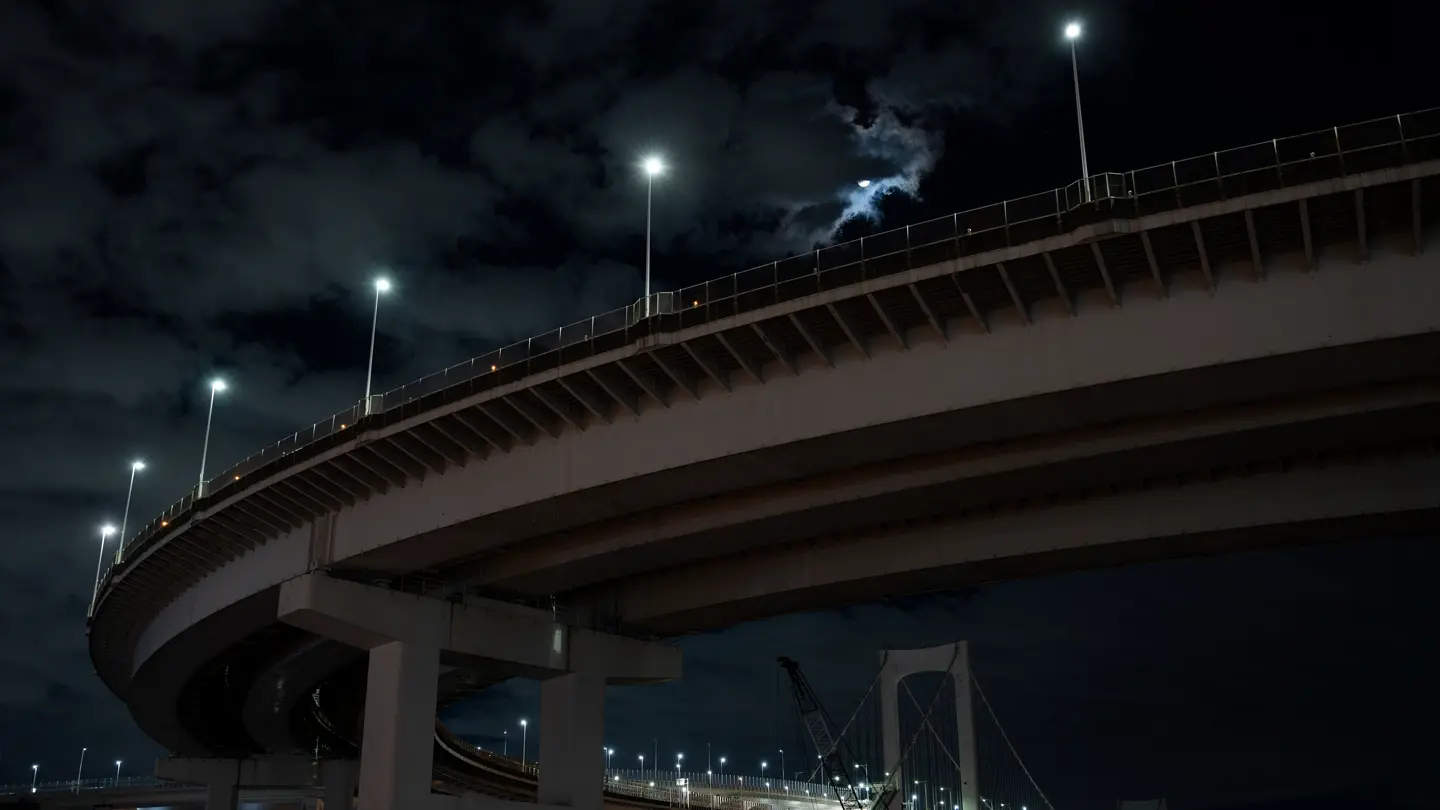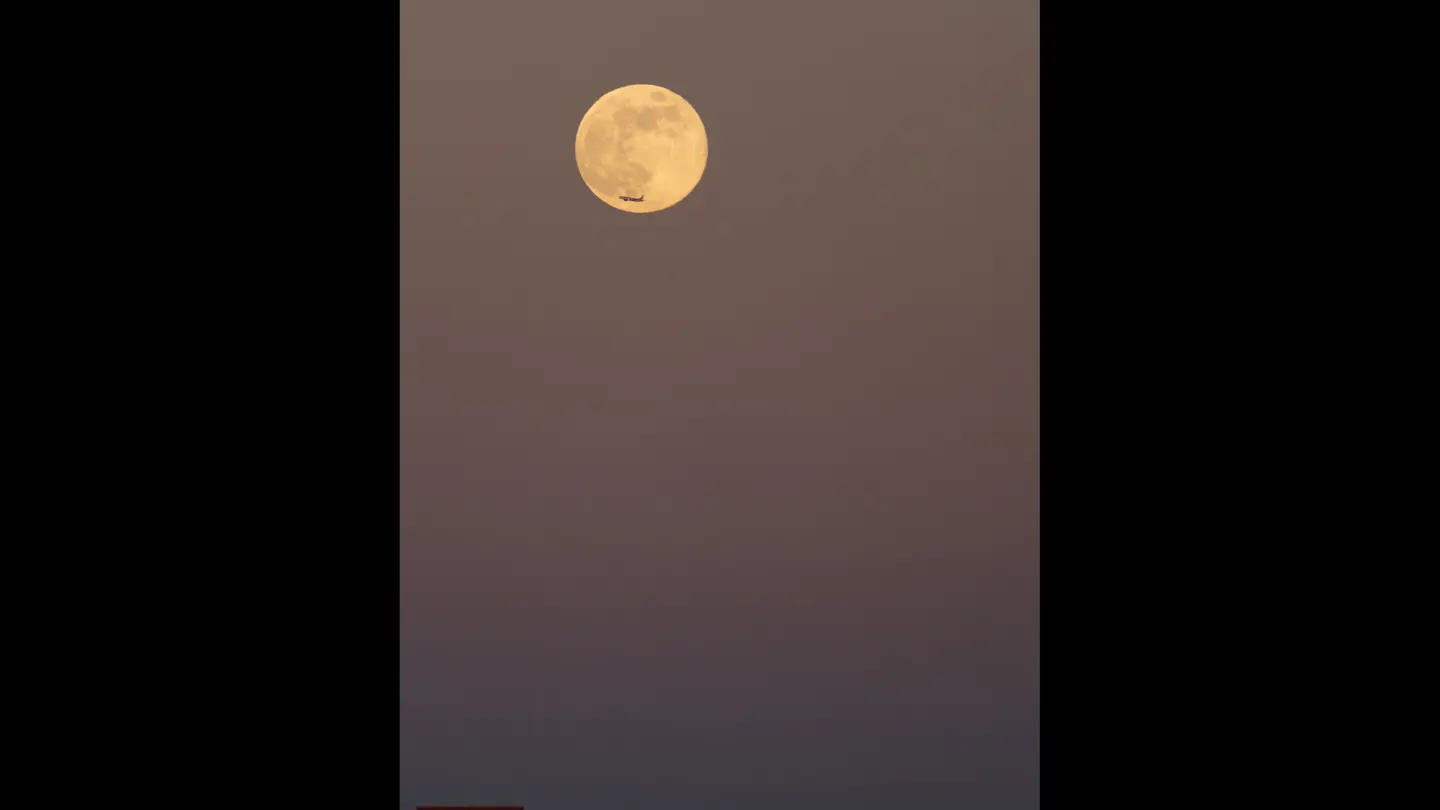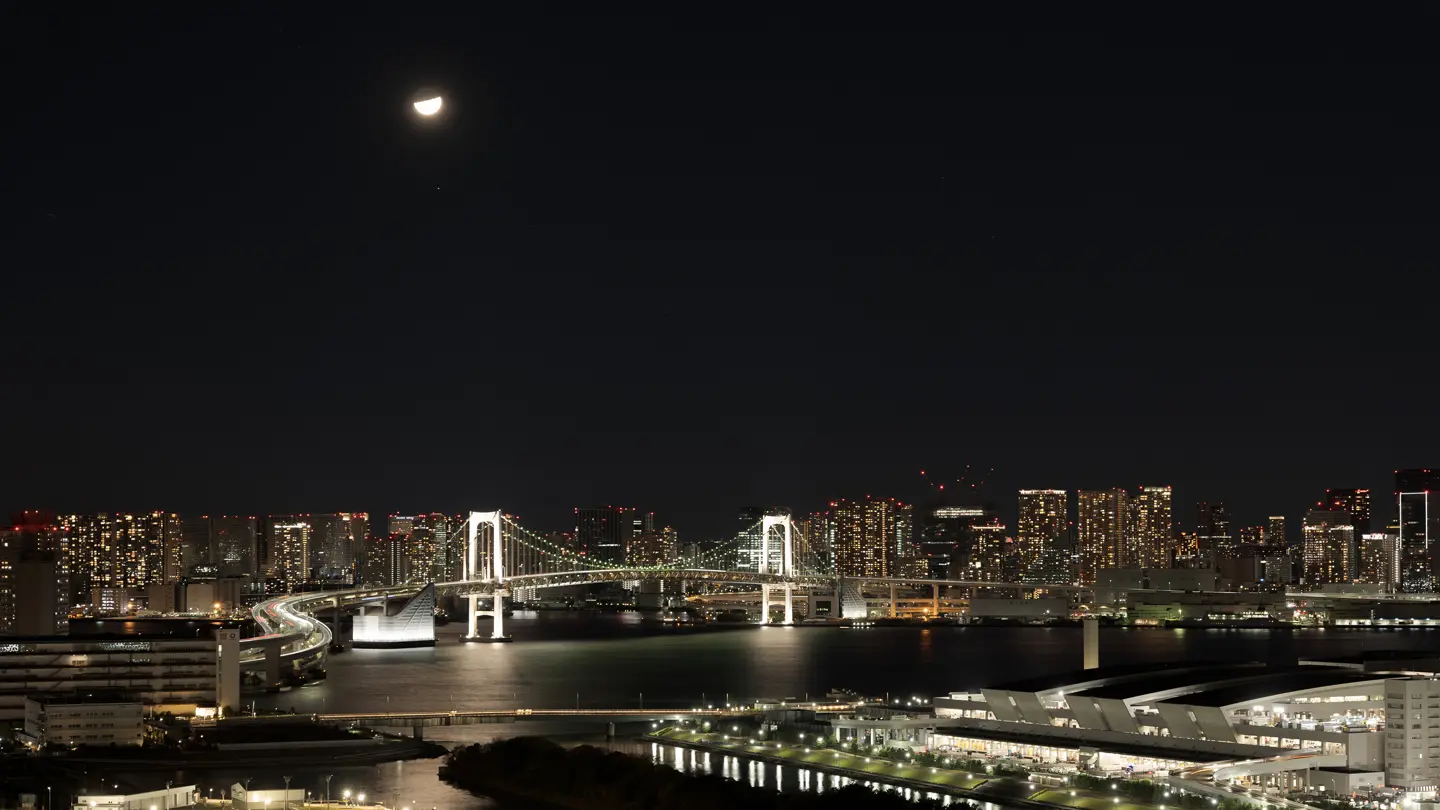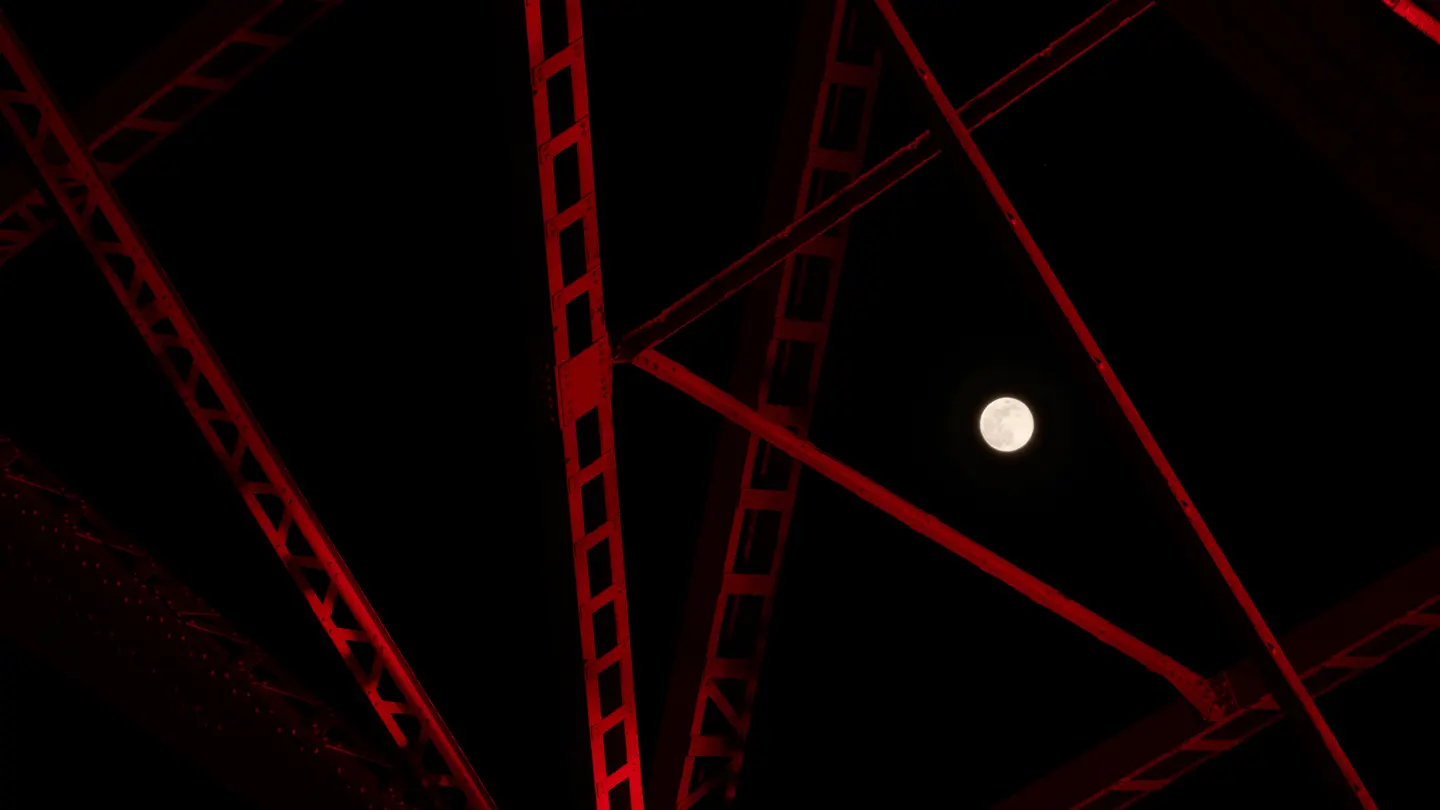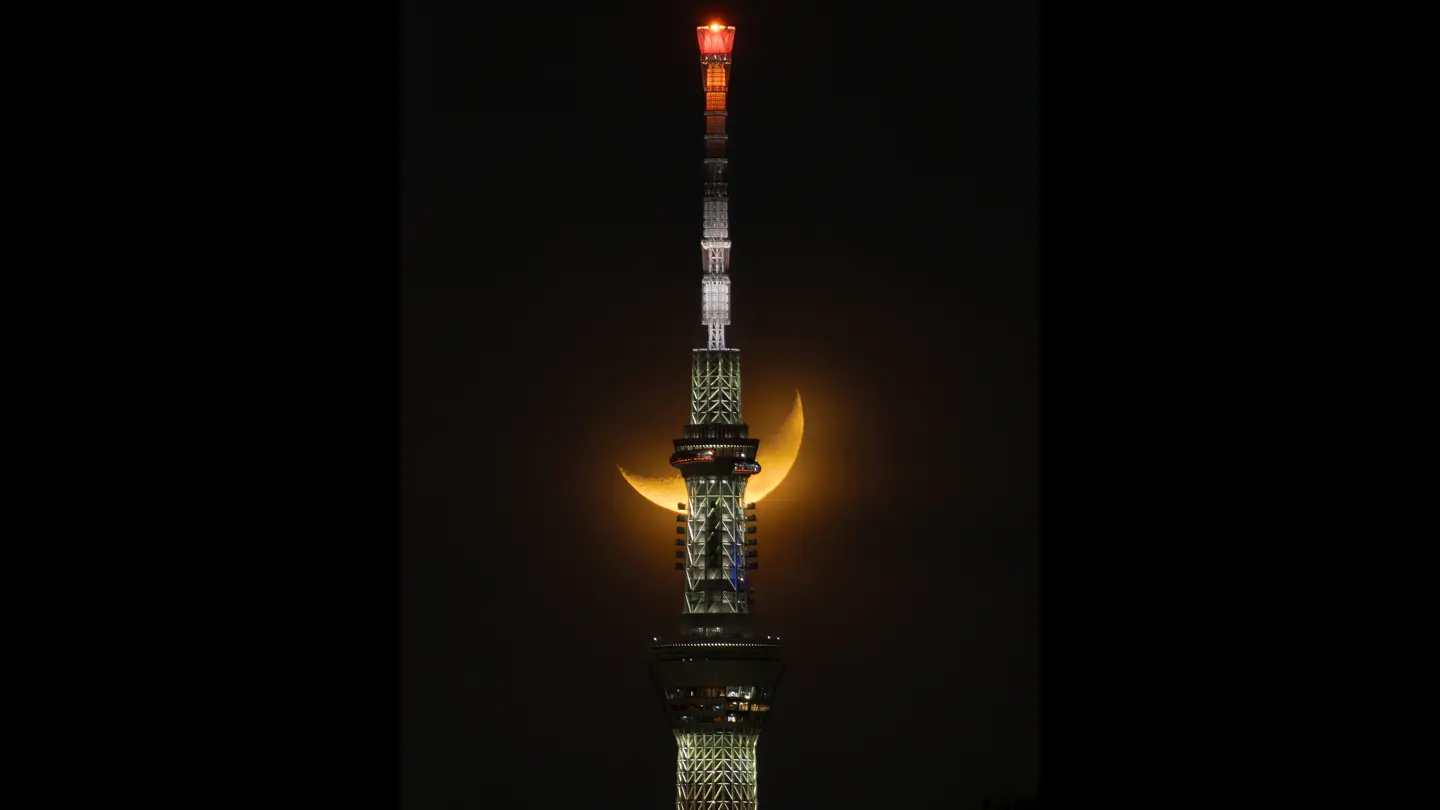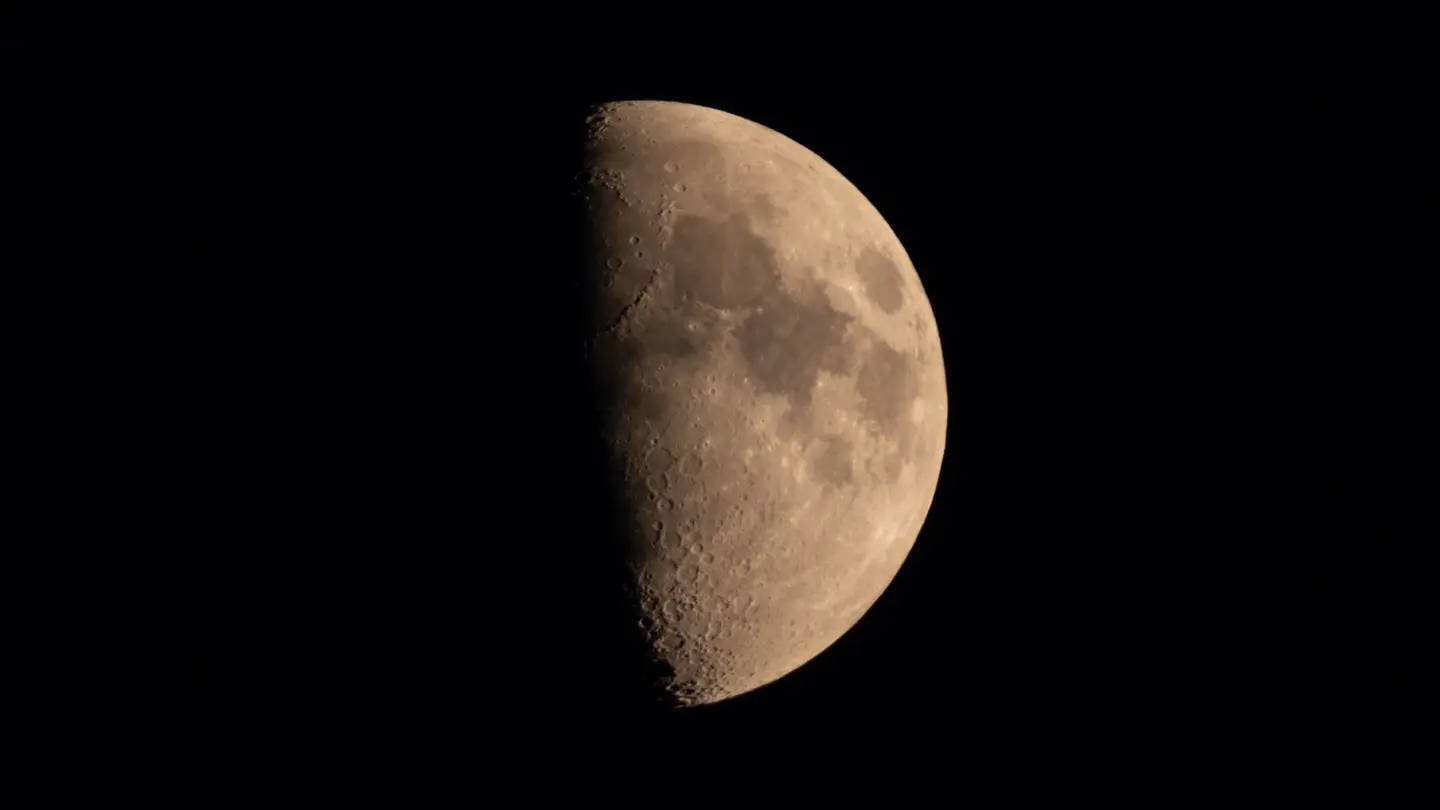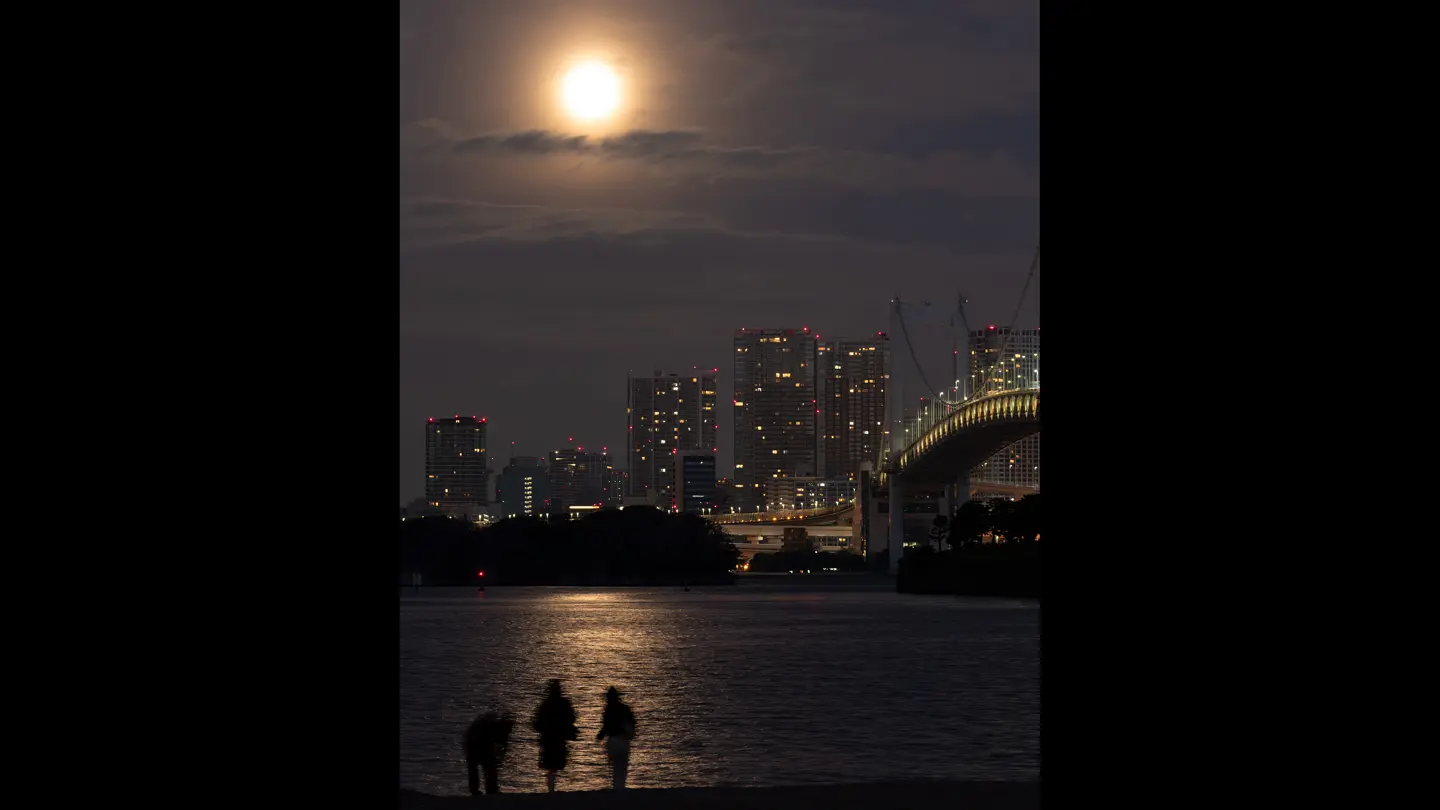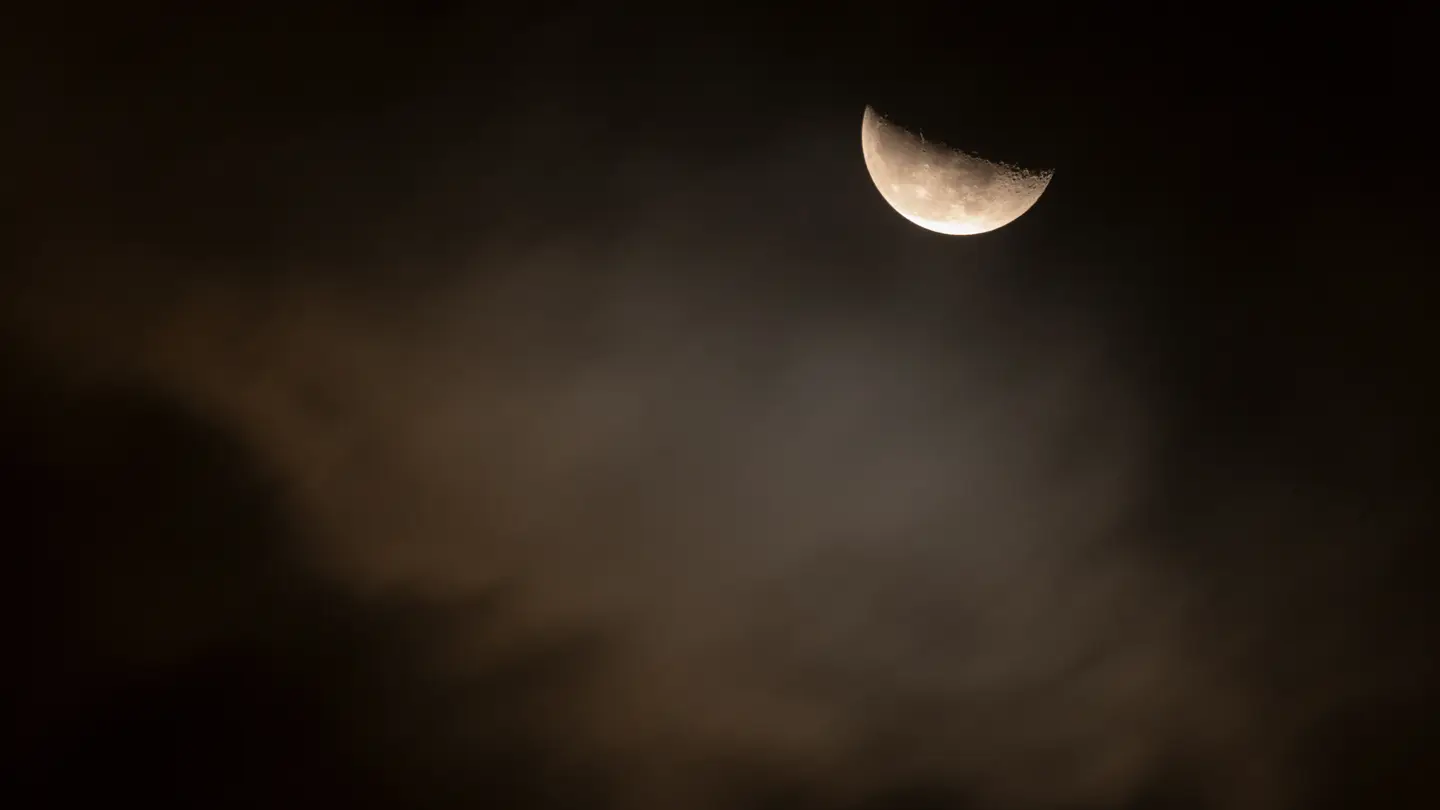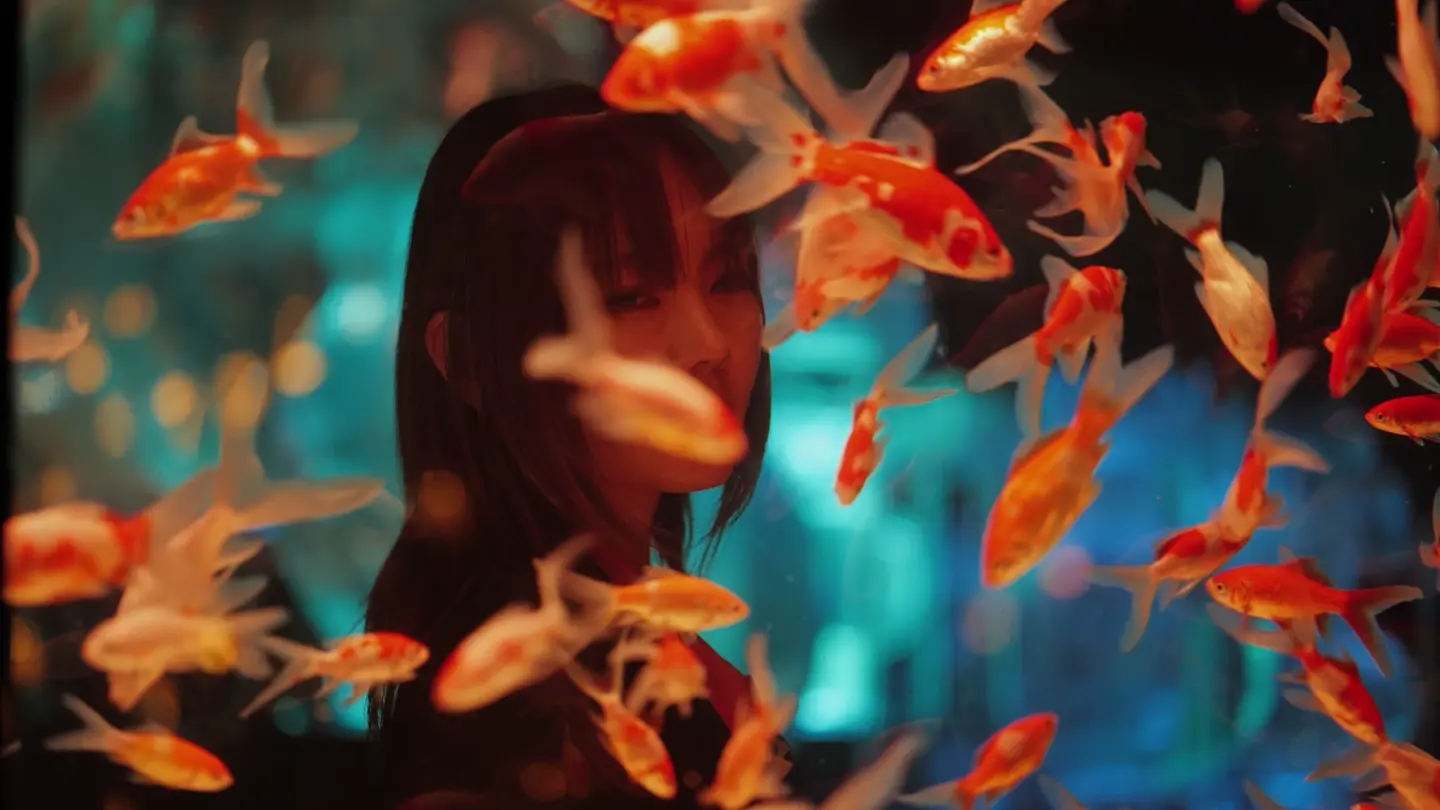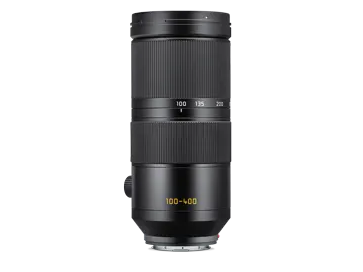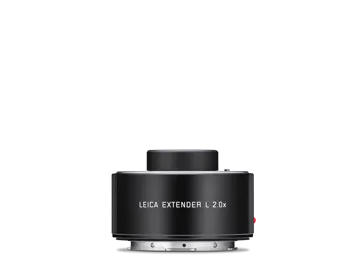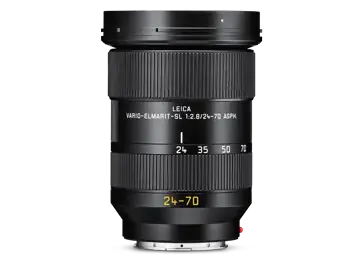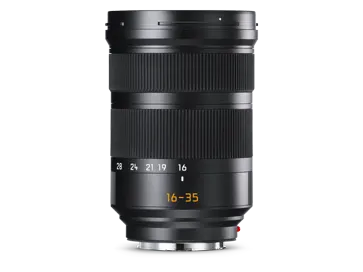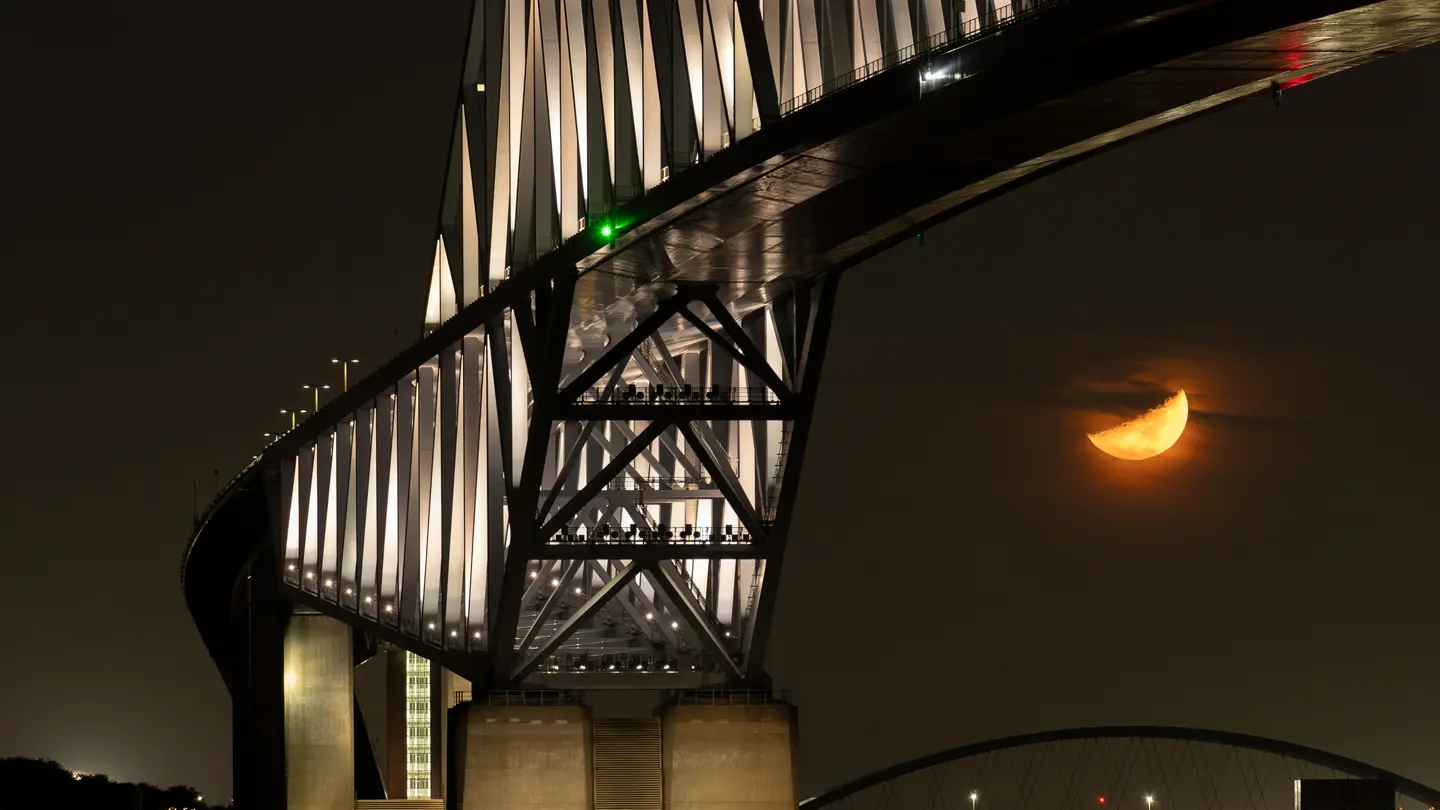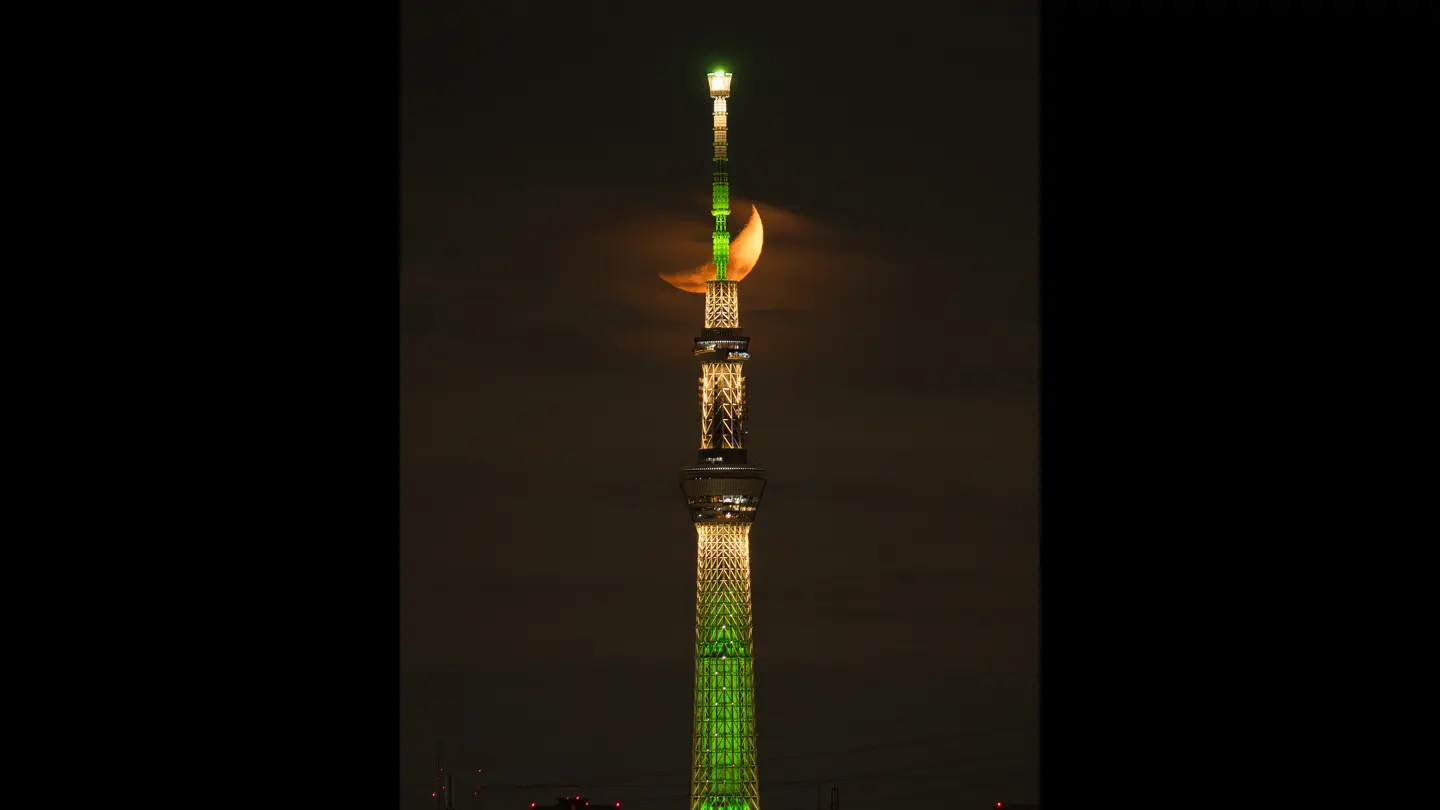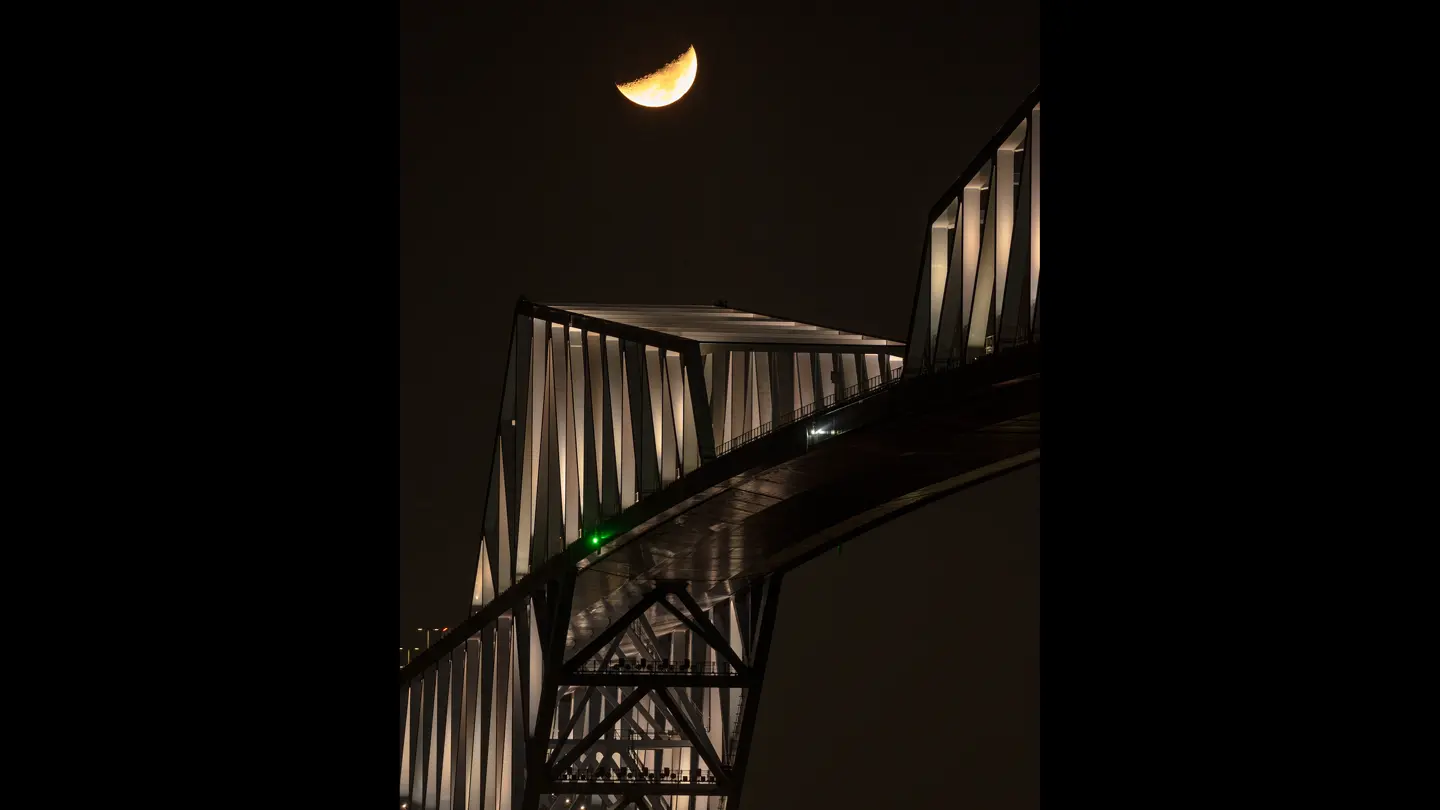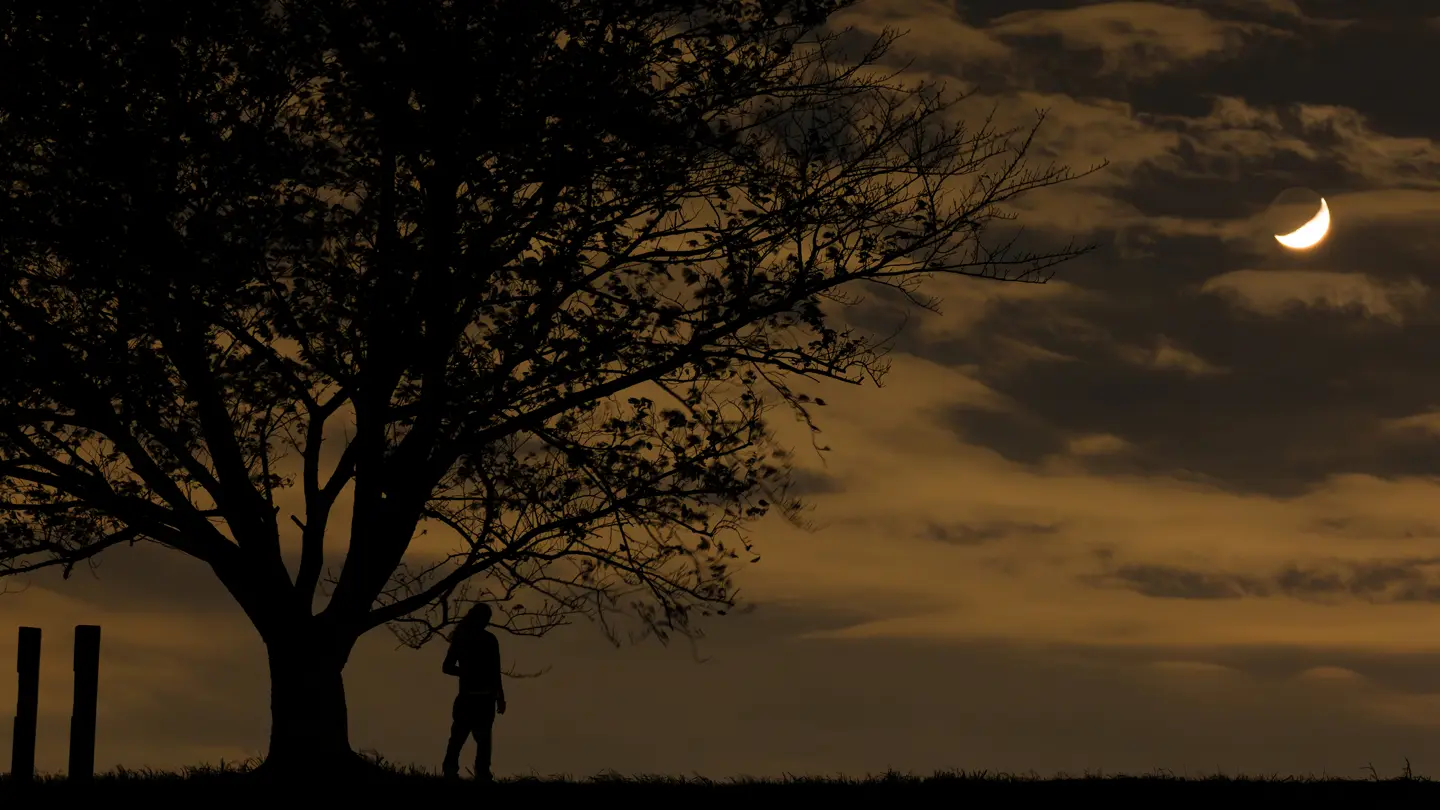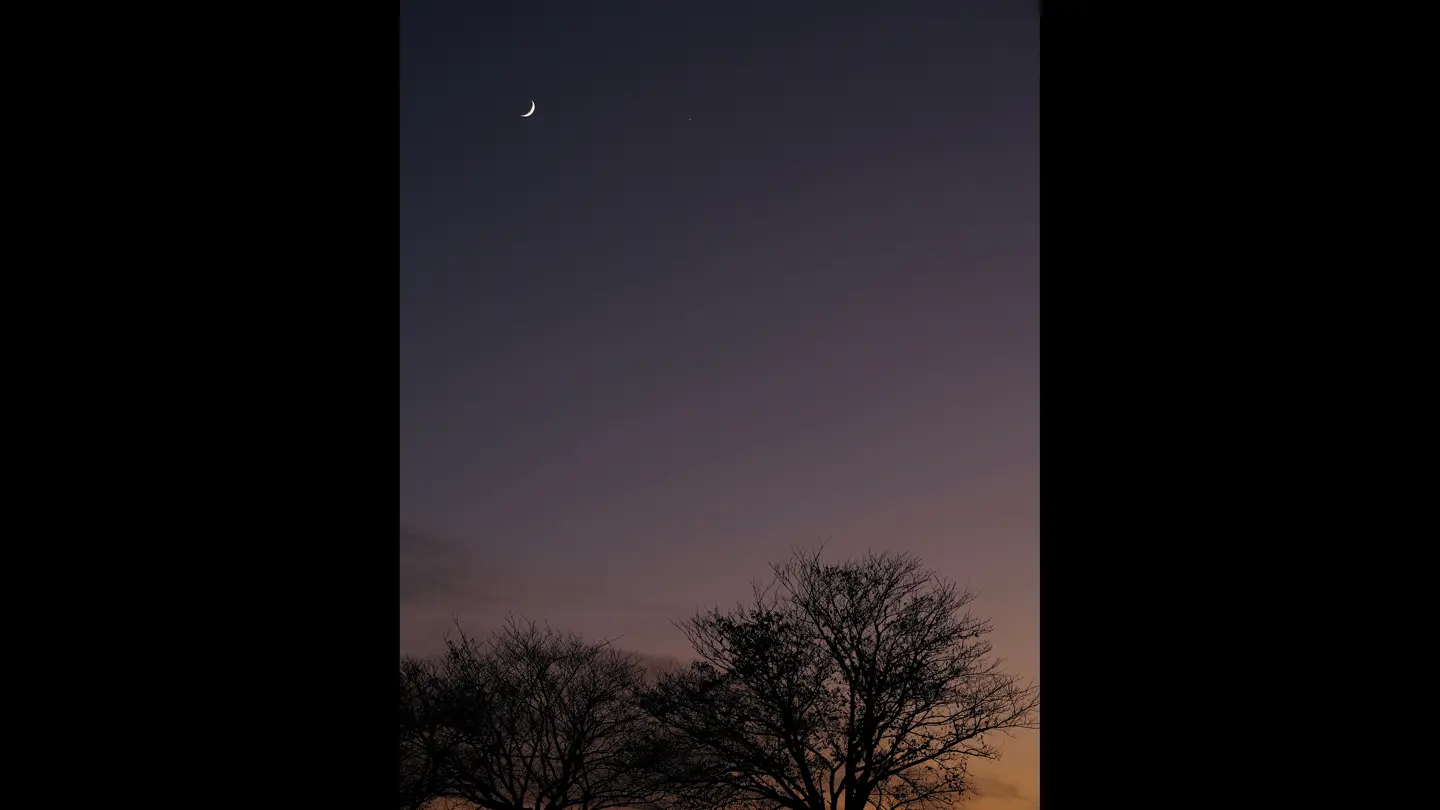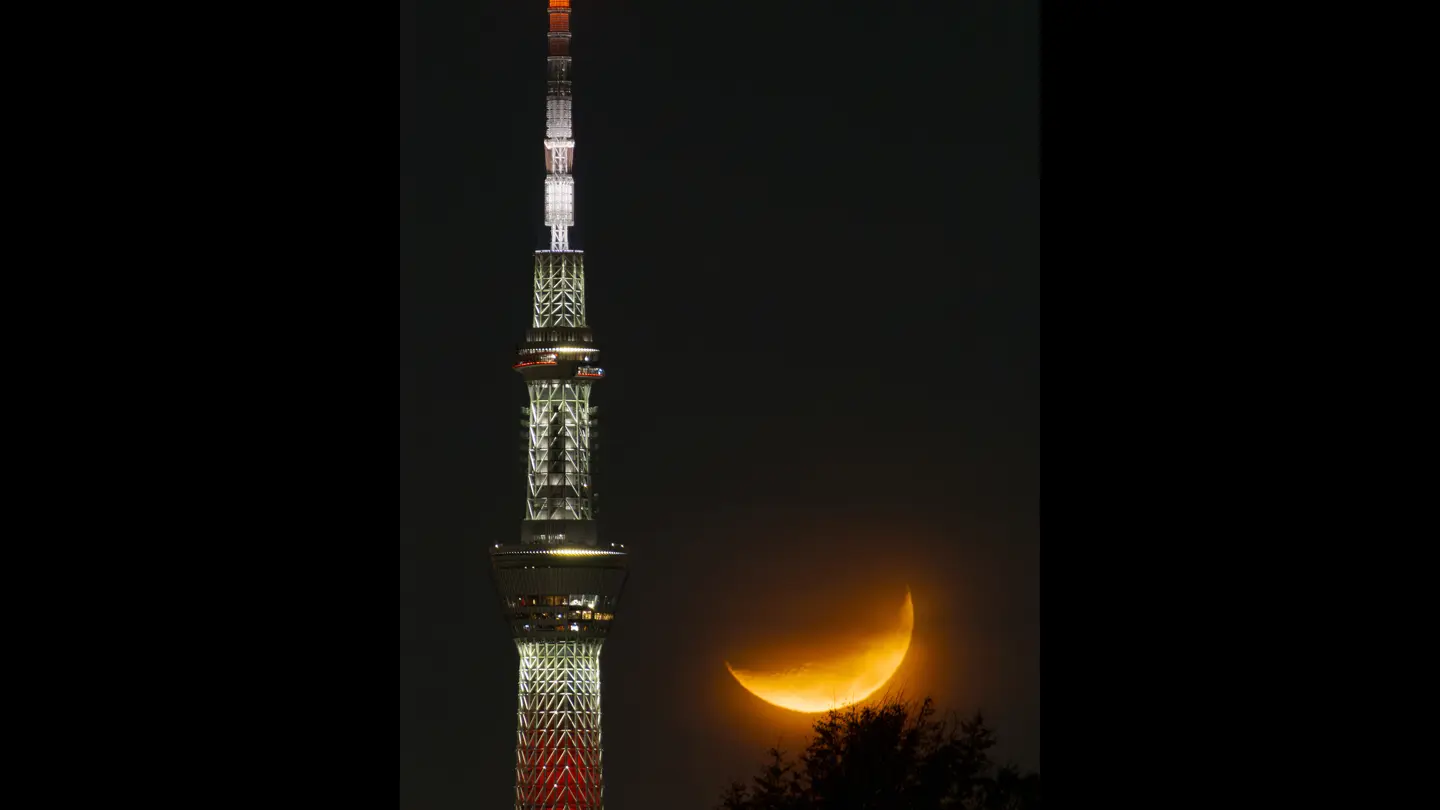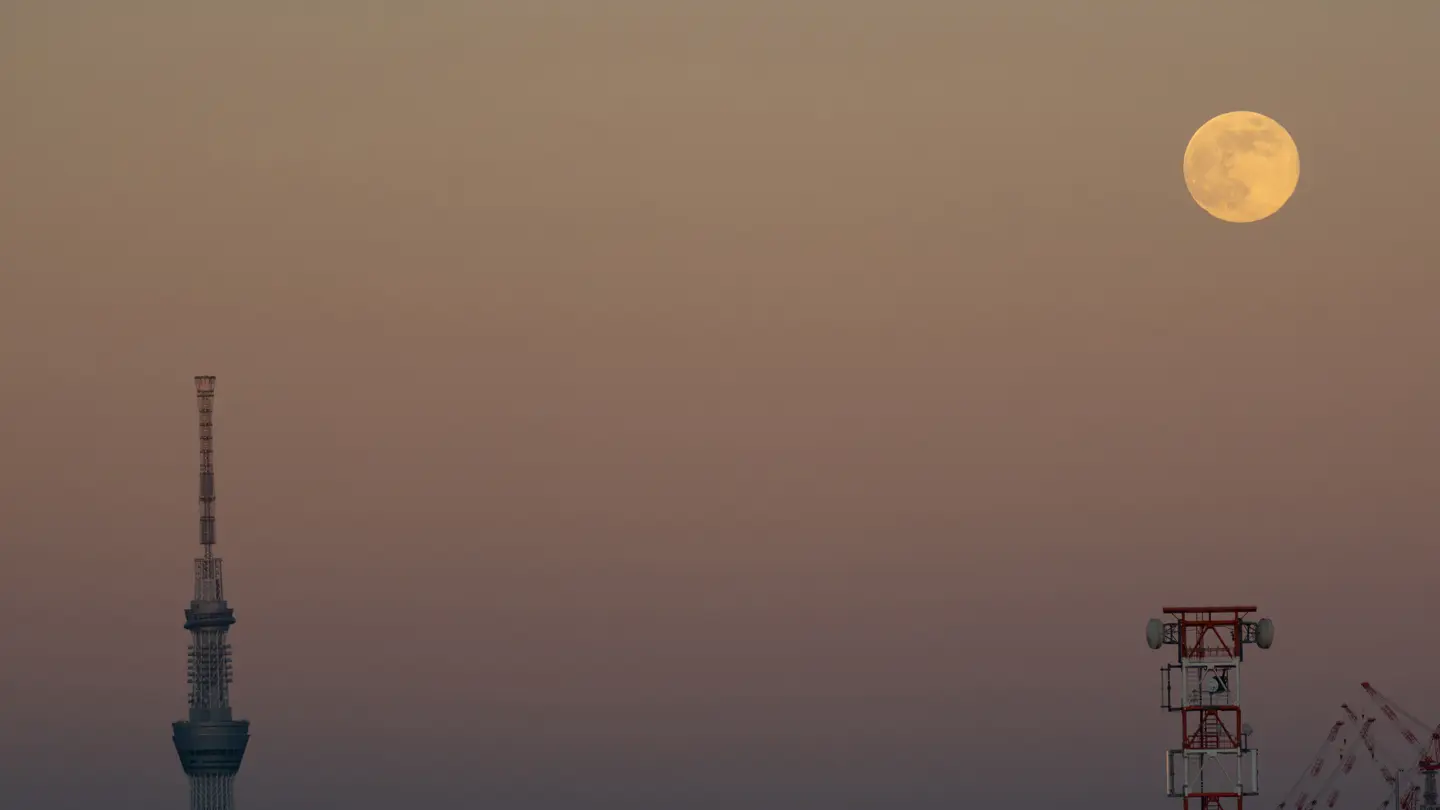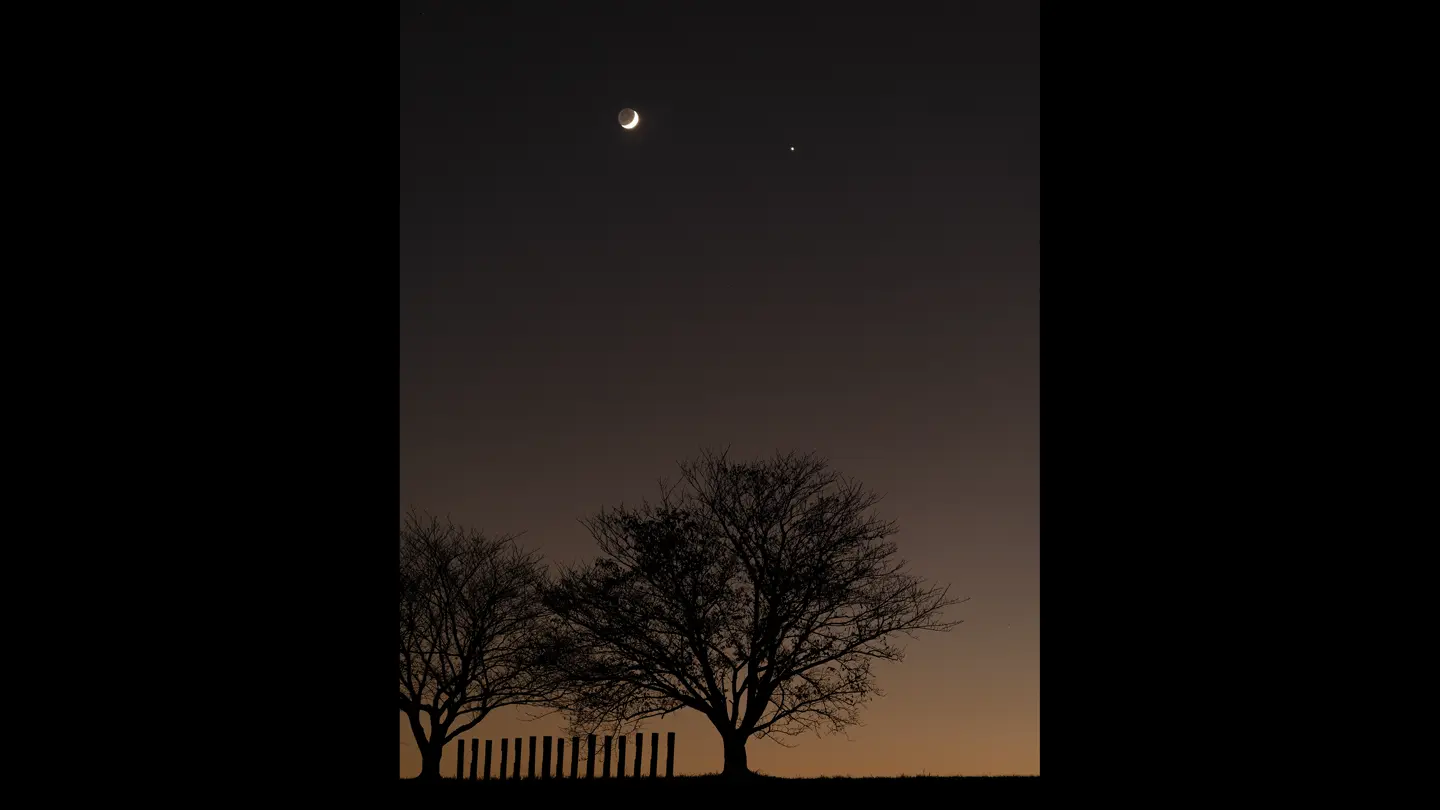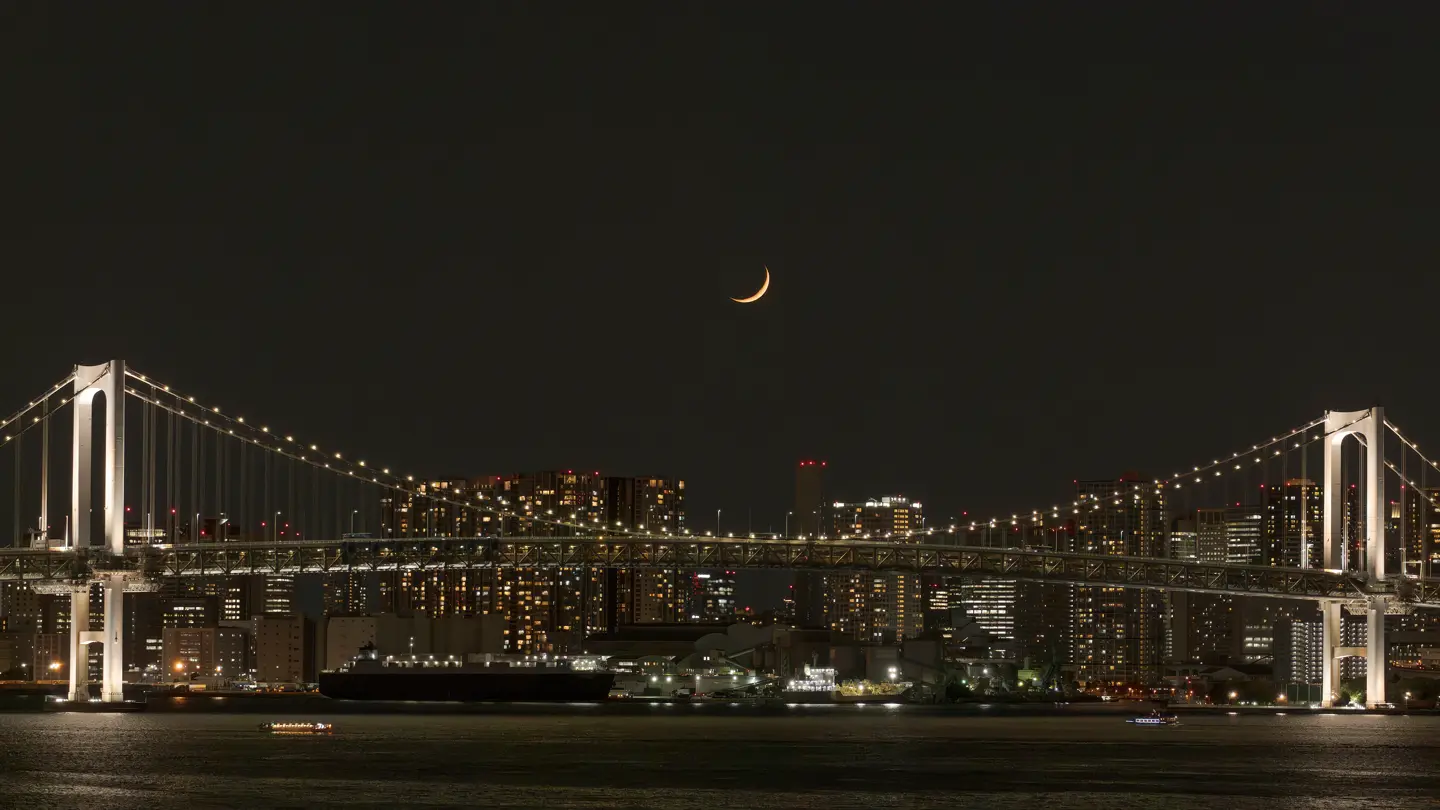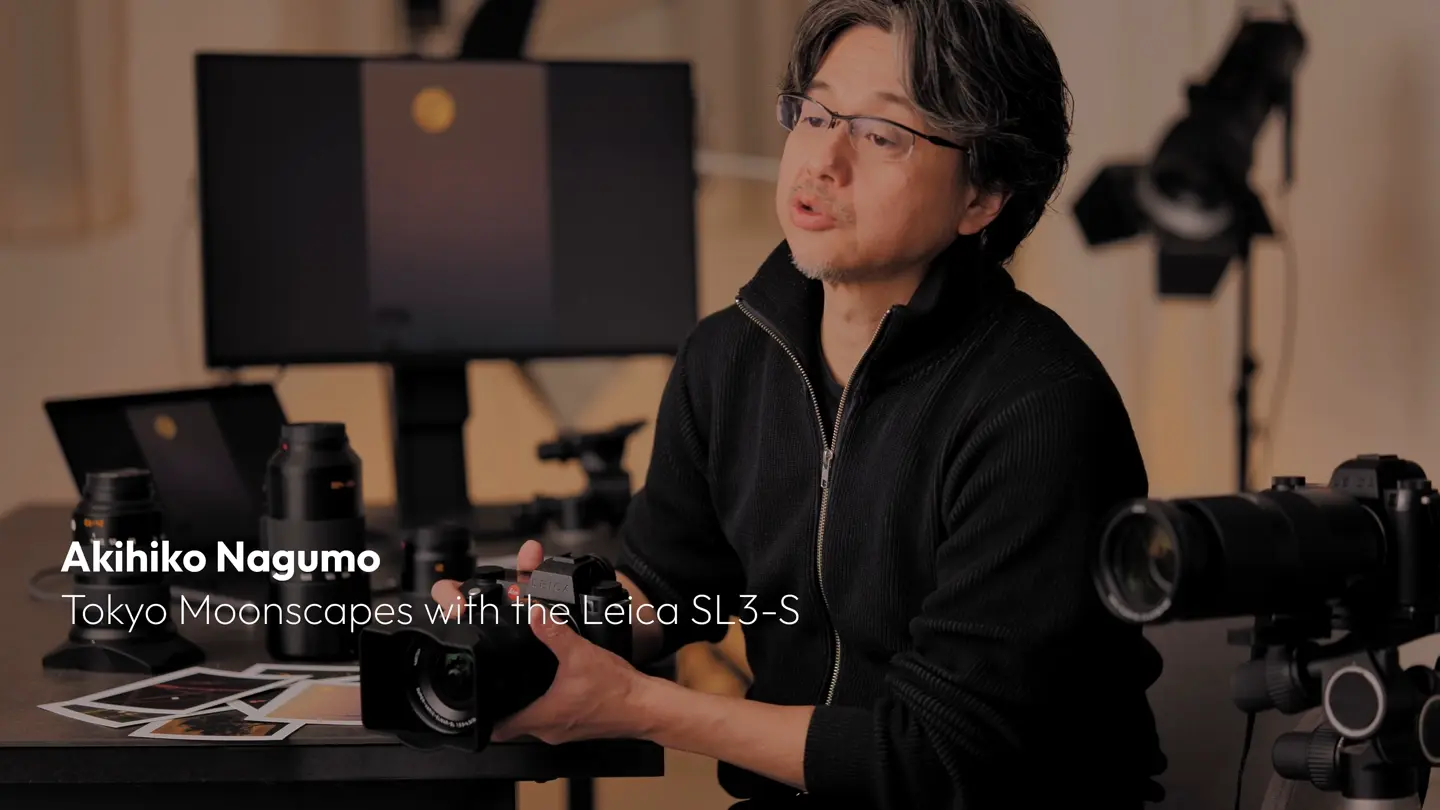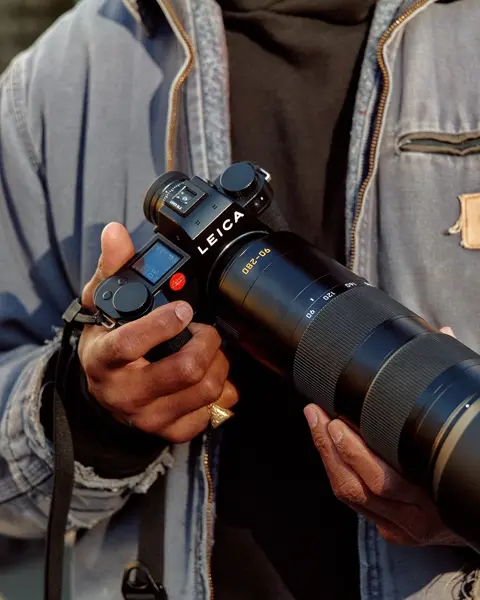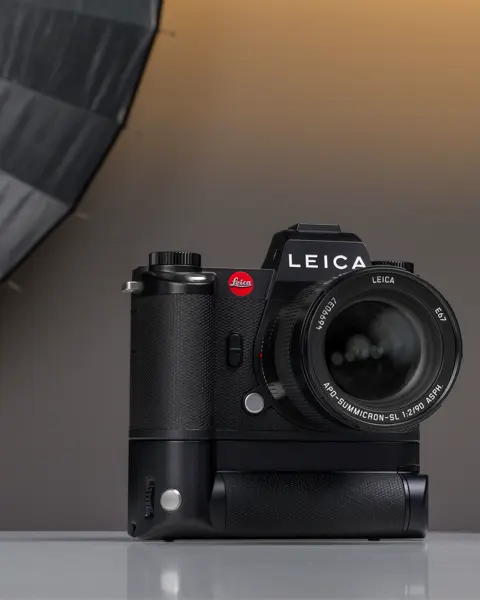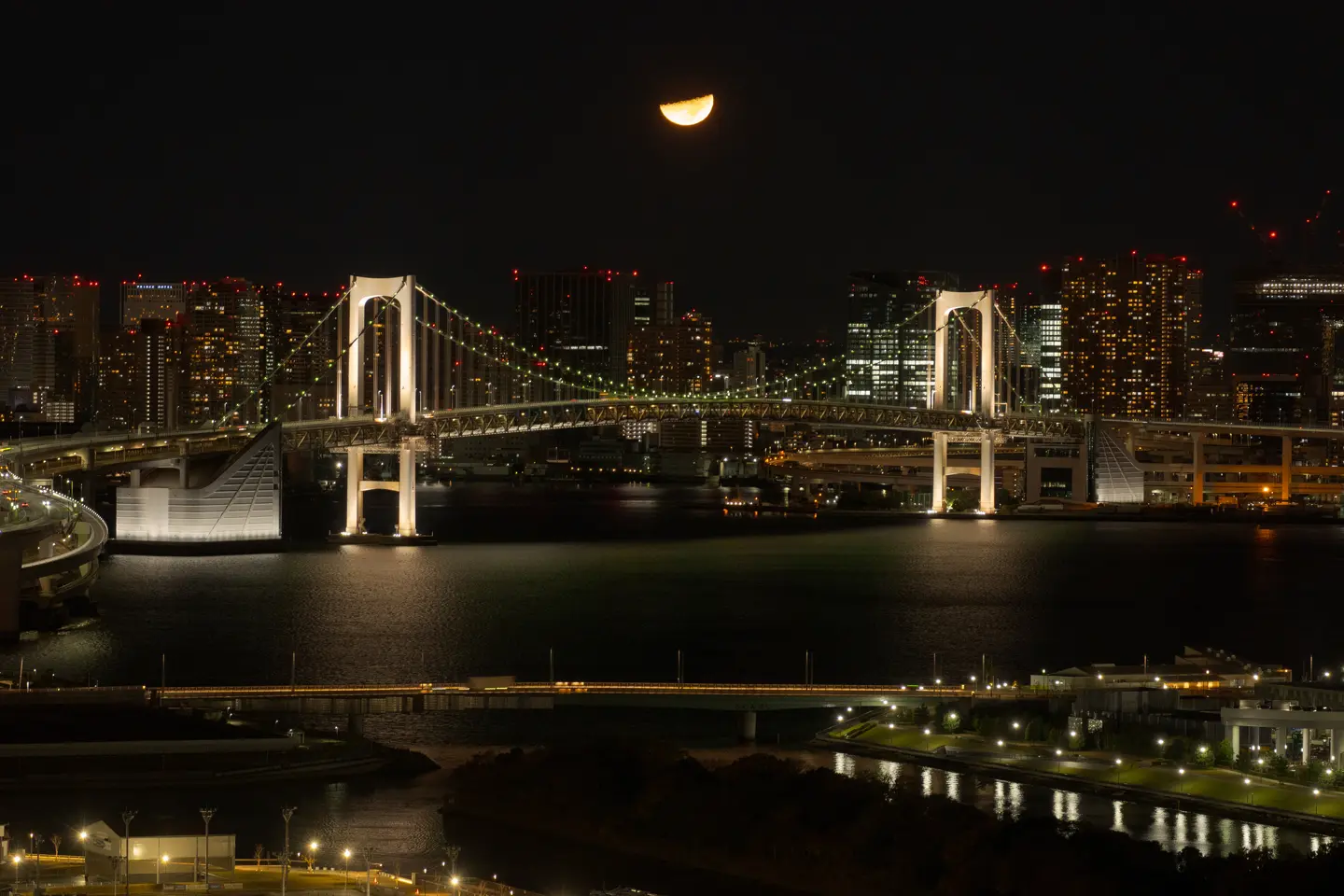
Tokyo Moonscapes
Fantastic moonlit night views of Tokyo captured with the Leica SL3-S by Akihiko Nagumo, a photographer who works extensively in commercial photography and video production.
The moon, when one tries to chase it, reveals itself to be a fickle subject, making it difficult to capture its beauty in a photograph. Unlike the sun, which scarcely changes its path or the times it rises and sets in a single day, the movement of the moon across the sky is far less predictable. Daily moonrise and moonset times may shift by an average of fifty minutes. Some days, the delay is only thirty minutes; on others it lingers as much as an hour and ten minutes. Moreover, its position when it rises shifts eastward by 12 degrees each day, and its shape transforms as it waxes and wanes. It is also quite skilled at hiding behind clouds. One could say that the moon is as mysterious and elusive as The Princess Kaguya herself.
In Japan, there is a unique and well-known story about the moon involving Natsume Soseki, the celebrated novelist of the Meiji era. The story goes like this: Soseki was reprimanding one of his students of English for his translation of the English phrase “I love you”. The student had translated it as “Ware kimi wo ai su”, which Soseki considered too direct and missing the cultural nuances of expressing love in Japanese. He suggested a more subtle expression and translating it instead as “The moon is beautiful, isn’t it?”
It is with that anecdote and the romanticism so characteristic of the Japanese spirit in mind, that I set out to capture the moon against the backdrop of the Tokyo night sky. The moon in the night sky may be something we take for granted, but what we see will last only a moment. The memory of that moment becomes an imprint of the emotions stirred in that instant. Two people gazing at the same moon and thinking of one another may feel a connection that prompts them to put their emotions into words, as in a confession. It was my intention to depict the romanticism of the Japanese people toward the Tokyo night sky. It is my hope that you too will see your own emotions reflected in these moonscapes, as I did.
“Isn’t the moon beautiful tonight !”
Movie Shot on the Leica SL3-S |
Moonlight Breeze
The Leica SL3-S, an exciting upgrade to Leica’s SL2-S, offers superior resolution-dynamic range balance and excellent maneuverability. My SL cameras are my “fighting Leicas”, and with this upgrade I feel more “battle-ready” than ever and confident that it can handle any job, from video recording to still images, including shooting in dark places and low-light settings. Among the features that stand out for me in the Leica SL3-S are the new tilting mechanism of the rear LCD monitor, the addition of a dial on the left, and the inclusion of Image Plane Phase Detection AF, all of which, combined with a lighter body, make this camera even easier to handle than its predecessors. With the three buttons on the back having been moved to the right, the left hand is now free to concentrate on lens adjustments, thus reducing the need for the photographer to constantly change hand positions.
For this project, I set out to capture moonscapes that, while an ordinary experience in our daily lives, are quite challenging to replicate in photographs, in addition to being elusive when one pursues them. For these images, I used a super telephoto lens and high ISO settings, while frequently looking up to shoot. Demanding conditions for sure, but the unobtrusive, seamless operation of the Leica SL3-S allowed me to focus fully on the photography rather than on the camera, making this a truly immersive experience. Such is the mark of an excellent tool.
Behind the Scenes With the Leica SL3-S
